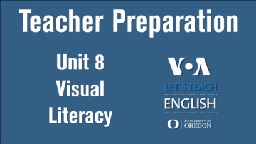 Video Transcript Video Transcript
Narrator: This lesson teaches students to work with a timeline graphic to
show life
events in order. They base the timeline on the hopes and dreams they
remember from different periods of their lives. Creating timelines helps
students develop visual literacy for academic charts and graphics. |
|
|
Teacher: This is a timeline.
(The teacher points to a poster with a timeline divided into five sections:
Age 6, Age 16, Age 26-46, Age 66-86, and Age 86-106.)
Teacher: It is a way to tell a story about something, like a person’s life.
Mimi: Oh, yes, I saw that in a museum.
Teacher: Exactly. You have some cards with answers about me. And you can
guess what age they are for. Julia.
Julia: Can we put them on the timeline?
Teacher: Yes. Are you ready to guess?
Students: I'd love to guess! Yeah! Yes.
Teacher: Okay, let’s begin. Show your cards to each other.
(Each student has a card and holds it up to show the other students.
Jamie’s card says “Animal Doctor.” Emma’s card says “Chef.” Maryam’s
card says “Teacher.” Julia’s card says “Mother.” Mimi’s card says
“President of the U.S.”)
Teacher: Okay, what did you guess for Age 6?
Julia: I think Mother goes there.
(Julia gets up and puts the “Mother” card on the timeline at Age 6.)
Teacher: Good guess! But, watch where I put the Mother card.
(The teacher moves the card from the Age 6 spot to the 26-46 spot
instead.)
Teacher: I was not ready to have children until then.
Jamie: Maybe it was Animal Doctor for Age 6.
Teacher: Yes.
(Jamie gets up and puts the “Animal Doctor” card on the Age 6 part of the
timeline.)
Teacher: Now, how about President of the United States?
Mimi: Age 6 too?
(Mimi gets up and puts the “President of the U.S.” card on the Age 6 part
of the timeline.)
Teacher: They go well together, don’t you think?
(The teacher and students laugh.)
Teacher: Okay, there are two more cards, Teacher and Chef. Where do they go?
Maryam: You are a teacher now, so we can put that card in 26-to-46 also.
(Maryam gets up and puts the “Teacher” card on the Age 26-46 part of the
timeline.)
Emma: Is Chef your plan now? Or, is it something for the future?
(Emma holds up the “Chef” card.)
Teacher: Yes, for the future.
(Emma gets up and puts the “Chef” card on the Age 66-86 part of the
timeline.)
Maryam: But, there is nothing for 16.
Teacher: That’s also true. I didn’t know what I wanted to be at 16.
Teacher: How does my timeline look?
Julia: Oh, I see. Things are in a line with the young age at the start and
the old
age at the end.
(Julia points to the timeline.)
Teacher: Yes.
Teacher: Now, put the cards with information about your partners on your
timelines.
(The teacher hands the timelines out to the students.)
(Students work together, talking and putting their stickie notes on their
timelines.)
Teacher: Okay! Next, we will play a game to help us fill in our hopes and
dreams for
the future. Take a turn and spin the wheel.
(Jamie spins the wheel and it lands on “fly a plane.”)
Jamie: There are many notes!
Teacher: Yes. Pick one of the notes.
Jamie: I pick “fly a plane.”
Maryam: Jamie, are you afraid?
Jamie: No, I’m not afraid. I would like to fly a plane. Maybe start with a
small one.
Maryam: You are very brave! Okay, then, let’s put it on your timeline at Age
26-to46.
(Maryam places the “fly a plane” stickie note on Jamie’s timeline.)
Teacher: Okay! Great! Now take turns. Let’s see how many things you can add
to
your timelines.
(Students continue spinning and adding more stickie notes on their
timelines.)
Jamie: Climb a mountain.
Emma: 16.
Maryam: 16? Yes.
Teacher: You put a lot of good future ideas on your timelines. What did you
learn
about your classmates?
Julia: Mimi and I both want to be engineers!
Emma: Yes, but there also are many different things we want to do.
Mimi: For the future, some of us would like to try new things. I got some
new
ideas from the game and from other people in the class.
Maryam: Yes, I will be brave. My dream is to learn to fly a plane too!
Narrator: Summary: The "Wheel of Futures" game lets students try out
different
future plans and possibilities and explain why they may or may not want to
do these things. The game format helps students think about their lives
from a new perspective. It may also help reduce anxiety caused by talking
about their futures. Next time, join us for Unit 9. We will teach vocational
language. |
|
Transcript Vocabulary
graphic (noun) – a picture, drawing, or graph used as a decoration or to
make
something such as a magazine article easier to understand
timeline (noun) – a line that includes marks showing when particular events
happened in the past
visual literacy (noun) – the ability to interpret, negotiate, and make
meaning from
information presented in the form of an image
© 2017 University of Oregon and Voice of America. This work is based on the
Women Teaching Women English materials
produced by the University of Oregon American English Institute under U.S.
Department of State Federal Assistance Award
S-LE200-10-GR-050, issued by the U.S. Embassy Beirut. |
|